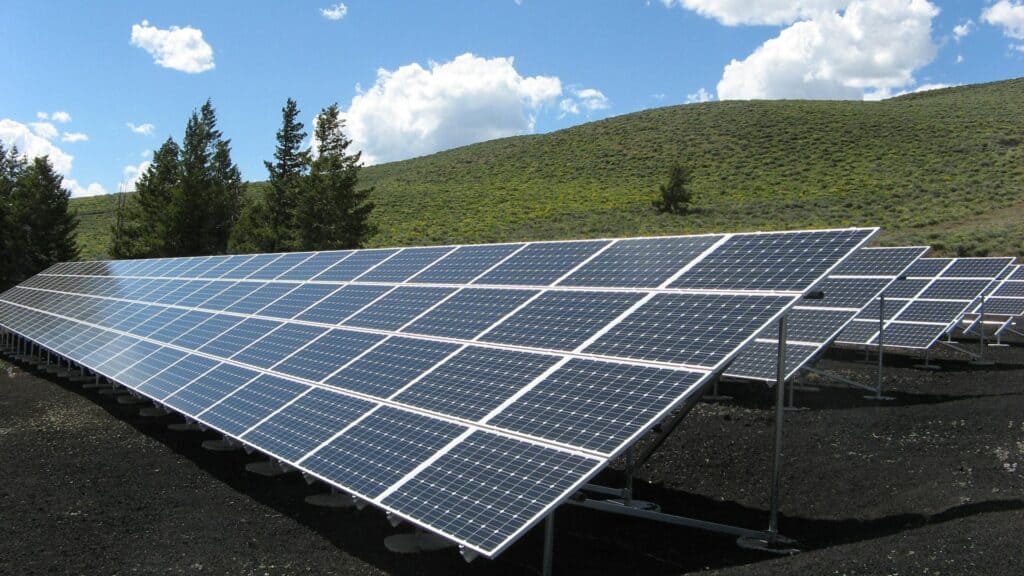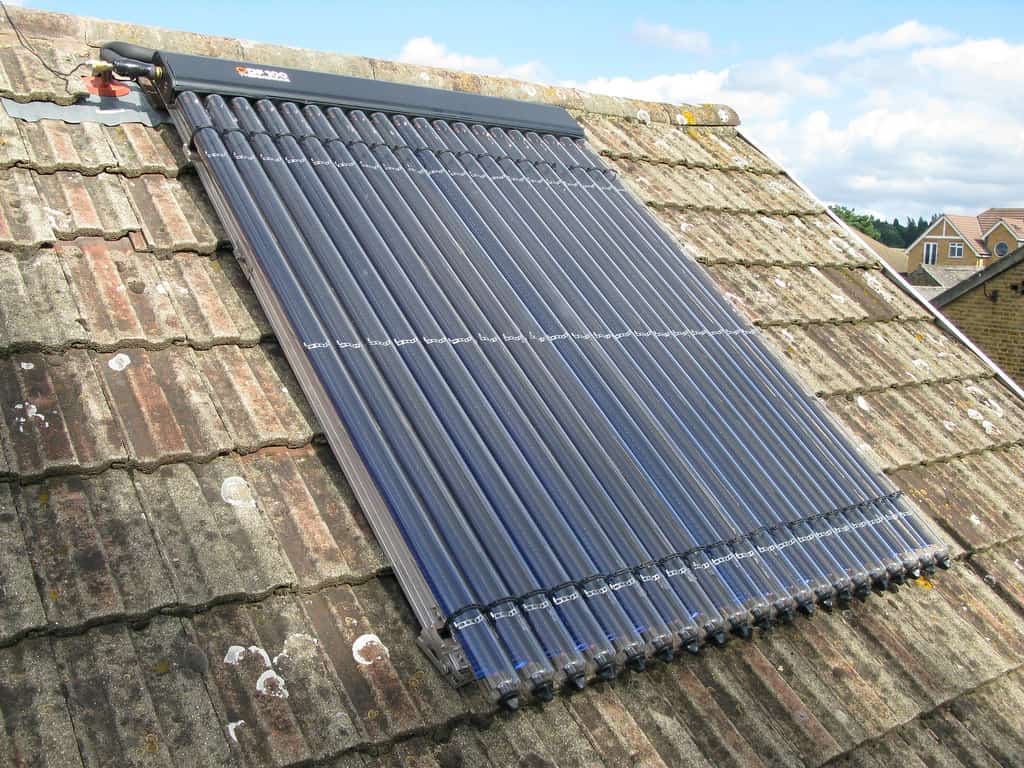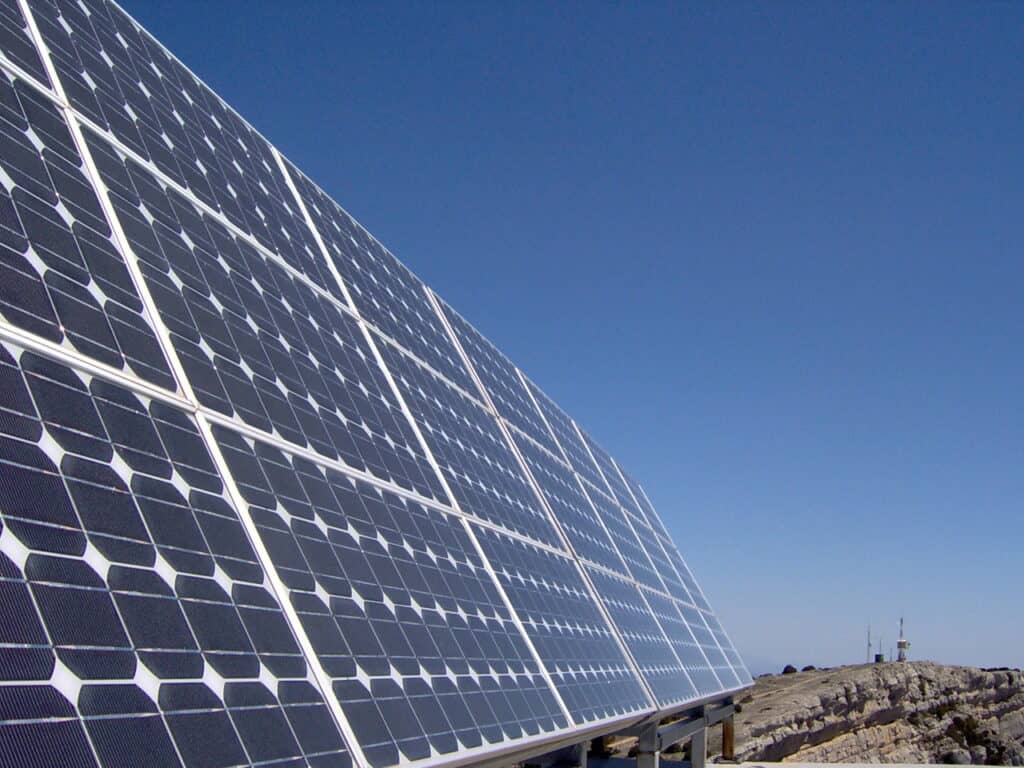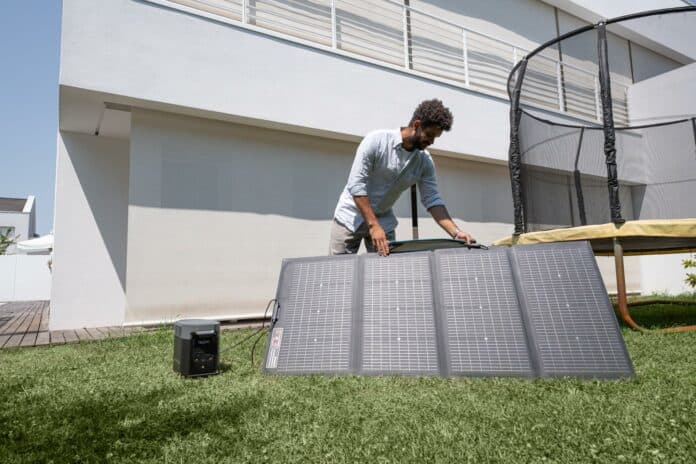The transition to renewable energy is gaining momentum as concerns about climate change and energy security escalate, and solar power is leading the way. Solar photovoltaic (PV) and solar thermal are both leading sustainable solutions. Read this guide to learn the differences and decide which best suits your purposes.
Solar PV vs. Solar Thermal — What’s the Difference?
Quick Answer: Solar PV and solar thermal both harness energy from the sun but for different purposes. Photovoltaic (PV) systems convert sunlight directly into electricity, while thermal systems produce thermal energy for residential heating systems such as hot water or space heaters.
The differences also come down to how they capture energy from sunlight. PV systems generate electricity when photovoltaic panels capture solar energy and convert it into DC electricity. Thermal systems capture the sun’s heat through thermal panels that absorb the sun’s thermal energy and transmit it to a heat-transfer fluid.
In this article, you’ll learn:
- The differences between solar photovoltaics and thermal energy systems;
- How a photovoltaic panel converts sunlight into electricity;
- The different types of solar thermal systems, including flat-plate collectors and evacuated-tube collectors;
- Which system is best for your energy needs.

Solar Photovoltaic
Solar photovoltaic (PV) technology is a renewable energy system that converts sunlight into electricity via solar panels. A PV panel contains photovoltaic cells, also called solar cells, which convert light photons (light) into voltage (electricity). This phenomenon is known as the photovoltaic effect.
How Does Solar Photovoltaic Work?
Photovoltaic panels consist of semiconductor materials (usually silicon). When sunlight strikes the surface of a PV panel, the semiconductor absorbs energy from the photons. That reaction releases electrons from their atomic bonds. It creates a flow of electrons, resulting in an electric current.
The generated electric current is in the form of a direct current (DC). An inverter converts the DC power into alternating current (AC) to make this electricity usable for most household appliances and the electrical grid.
Components of Solar Photovoltaic (PV) System
PV systems have various interconnected components that work together to provide electricity to your home. These components include:
- Photovoltaic Panels
- Charge Controller
- Solar Battery Bank
- Inverter
- Utility Meter
- Electric Grid
Off-grid systems only use the first four components, as they do not utilize utility meters or electric grids.
The solar panels are your system’s first (and most important!) component. They interface directly with the sun’s rays, converting the photons into electricity.
An inverter converts direct current (DC) electricity into alternating current (AC) electricity. The inverter is crucial since PV panels produce DC electricity, while most household appliances and electrical systems operate on AC. Common types of inverters include string inverters, microinverters, and hybrid inverters.
The charge controller comes next in a PV system. This device sits between the photovoltaic panels and batteries to regulate the electricity that passes between them. The charge controller prevents overcharging and transmits an electrical current to the battery bank.
A battery bank stores electricity for later use. Also called a solar battery, it is handy for cloudy days or wintertime when your PV array produces less power.
Utility meters are an essential part of any grid-tied system. These devices measure the flow of electricity between the electric grid and your home’s solar system. A utility meter will track the electricity produced and consumed by a home.
The electric grid is the final component of a grid-tied system. The power produced from a residential solar array is sent through a utility meter and out into the electric grid. When a home draws power, it also pulls from the electric grid (unless the system has an energy storage system like a battery).
Net metering programs allow homeowners to receive payment for any excess energy produced during a billing period.
Advantages
- Whole-Home Power — provides electricity to an entire house, including appliances, lights, water heating, HVAC, and more.
- Renewable Energy — PV systems are a renewable energy source, reducing the user’s reliance on fossil fuels and utility companies.
- Lower Electricity Bills — photovoltaics can drastically reduce or eliminate your monthly electricity bill.
Disadvantages
- Upfront Cost — upfront costs for a PV system can be in the tens of thousands. However, this cost is easily recoupable over the system’s lifetime.
- Aesthetics — some home and business owners may find a solar array visually unappealing.
- Space Requirements — whole-home PV systems require around 480 sq ft (45 M2 on average.)

Solar Thermal
Solar thermal panels perform a similar function to PV panels by converting sunlight into usable energy. However, thermal panels differ in that they use a heat-transfer fluid — either water or air — to capture the energy, as opposed to the semiconductors of PV panels.
Thermal systems are an efficient and environmentally friendly method for residential or commercial heating. They reduce the user’s dependency on fossil fuels and lower greenhouse gas emissions.
How Does Solar Thermal Work?
Depending on the intended usage, there are a few different types of thermal systems. In all solar thermal systems, a heat-transfer fluid (water or air) collects energy from the sun. The hot fluid is then used directly in the space for heating, or it can produce steam for mechanical energy.
Most residential systems use flat-plate collectors. The thermal panel consists of a dark, flat surface encased in a thermally-insulated box. The dark color of the panel allows more energy absorption.
Another common type of thermal system is the evacuated tube collector. This type of panel features a series of glass tubes containing a vacuum, which reduces energy loss.
Either of these panel types can work for hot water heating, space heating, or electricity generation.
For home heating, the heat-transfer fluid can circulate through pipes in a floor through radiant heating. A radiant floor system radiates the heat from the liquid into the room.
Solar thermal systems can also operate on a commercial scale for energy production. The heat-transfer fluid produces steam that, when passed through a turbine, powers a generator that produces electricity.
Components Used in a Solar Thermal System
While individual systems will vary, a few components are common to most thermal systems.
Solar thermal collectors are the “panels” in a thermal system. They are usually installed on a home’s roof and convert the sun’s energy into heat.
The heat transfer fluid flows through a thermal collector and transfers the heat to the rest of the system.
The pump station distributes the heat transfer fluid throughout the system.
A controller monitors and regulates the transfer process. It controls the other system components, ensuring safe and reliable operation.
A hot water tank will likely be integrated into the design if the thermal system is for heating household water. For radiant heating systems, pipes installed in the floor allow the heat transfer fluid to flow throughout the home.
Advantages
- Efficiency — thermal systems are an efficient way to convert sunlight into heat for your home.
- Renewable Energy — a thermal system utilizes renewable energy to reduce environmental impact.
- Reduced Heating Bills —a thermal system may reduce your monthly water, gas, or electricity bill.
Disadvantages
- Limited Use — thermal systems are not practical for whole home electricity generation. A photovoltaic system is more efficient for this purpose.
- Incompatibility — radiant heating systems are part of the construction process, installed before pouring the concrete foundation for a home. It is often impractical to retrofit a home with radiant heating.
- Intermittent Energy Generation — a thermal system will only function while sunlight is available, so your energy production may decrease depending on the weather, season, or time of day.

Conclusion
Solar PV and solar thermal both utilize renewable energy. PV systems harness sunlight to generate electricity to use throughout your home, while solar thermal systems use sunlight to heat water or residential spaces. Either system can be liberating, freeing you from monthly electric bills and reliance on fossil fuels.
A solar thermal system may work for you if you just need to heat your home. Otherwise, photovoltaic systems are much more versatile — you can heat your home and water while also powering your home’s electrical system.
If you’re ready to install a PV system for your home, check out EcoFlow’s innovative solar solutions.
Frequently Asked Questions
No, solar PV systems and solar thermal systems are not the same. PV systems convert sunlight into electricity using photovoltaic cells, while thermal systems capture the sun’s heat using a heat-transfer fluid. Both harness solar energy but serve different purposes and use different technologies.
Yes, thermal systems can work in colder climates with less sunlight. While their efficiency may decrease in cold conditions, they can still provide heat by absorbing diffused sunlight. Evacuated tube collectors are particularly effective in cold climates due to their vacuum insulation, which minimizes heat loss.
Solar photovoltaic systems typically have a lifespan of 25-30 years, with panel efficiency gradually decreasing over time. Thermal systems can last around 20-25 years. Both systems require periodic maintenance to ensure optimal performance, and some individual components may need replacement within the lifetime of a system.
Photovoltaics are versatile technology that can generate electricity for various residential uses, including lighting, appliances, and heating. Solar thermal is a more specialized technology best suited for water and space heating. Combining both technologies can give you the best of both worlds and maximize energy savings.
